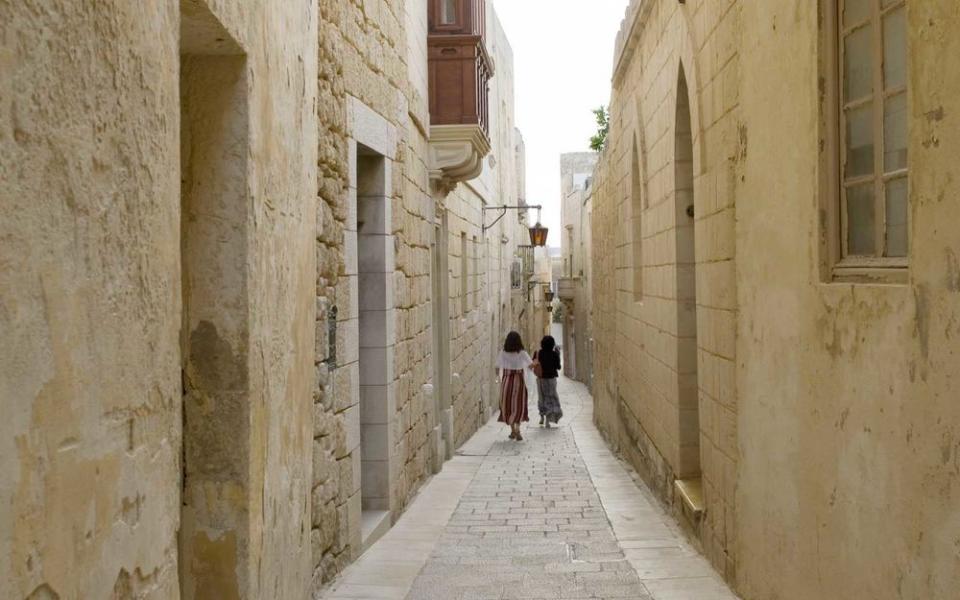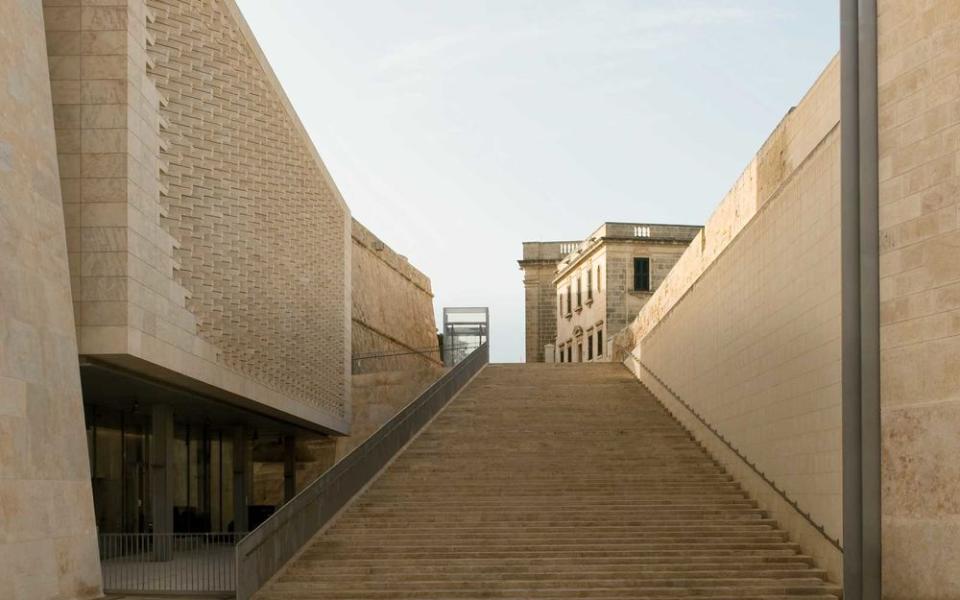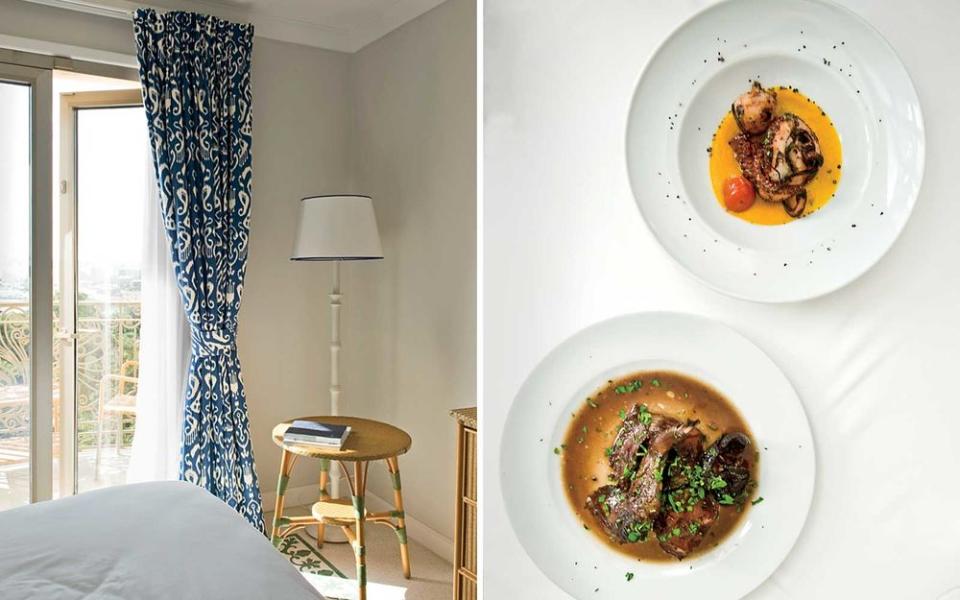How Malta Became the Mediterranean's Latest Hot Spot
Within minutes of landing on Malta, I was trying to decide what the place reminded me of. Now, I love Morocco, particularly the Atlantic coast, with its eminently photogenic blue fishermen’s boats. And I really love Sicily, for its wheat-colored landscapes, the cultural palimpsest of its cuisine, and pretty much everything else. This tiny archipelago nation — which lies some 60 miles south of Sicily and roughly on a latitude with Tangier — feels like a glorious mash-up of those two places. The swaths of prickly pears running riot across the interior put me in mind of the coast near Agadir, and the ornate elegance of the grand palazzo façades had me recalling Catania. But Malta is also entirely, ineluctably its own culture, ambience, and people.
The preponderance of English package tourists notwithstanding, it’s surprising that Malta has stayed under the radar of Americans for so long. There are white-sand beaches in abundance, particularly along the northern coast of Malta, the namesake main island, and on the smaller island of Gozo. There is an alluring history, a long narrative of colonization and attempted invasion going back to the Phoenicians (around 750 B.C.) and lasting until its formal independence from the British Empire in 1974 — with Carthaginians, Byzantium Romans, Arabs, Normans, the Knights of the Order of St. John, Ottoman Turks, and Napoleon in between. And there is the orderly beauty of Valletta, Malta’s fortified capital, designed on a grid system by those same Knights of the Order of St. John in the 16th century.

When I arrived in early spring, the fields at the island’s center were thick with yellow wildflowers bowing in the stiff breeze. The sun, when it cut through fat white clouds, was instantly warming. (The temperature climbs into the triple digits in late July and August; May through mid-June and mid-September through the end of October are the best times to visit.) The people are inordinately friendly; three out of the four times I asked for directions, I was offered a personal escort to my intended destination. And the country’s size — just 17 miles long and nine miles wide — means it’s a cinch to explore.
In 2017, Malta had a 38 percent uptick in visitors from the U.S. It continues to rise in popularity thanks to a wave of new development in Valletta, designated one of two European Capitals of Culture for 2018 and host to a robust calendar of exhibitions, performances, and events through the end of the year. Here, four reasons why you should visit now.
21st-Century Culture Is on the Rise...
Malta wears its multi-millennial history with pride, and its patrimony, from the prehistoric dolmens to the Baroque palaces, is everywhere. But the Maltese are now emphasizing contemporary architecture and design, too — starting with Valletta’s City Gate, dynamically reimagined by Renzo Piano. Five gates have existed on this site, going back to 1569; Piano’s, which was finished in 2014, is a glass, steel, and limestone masterpiece that includes the parliament building and an open-air theater. (It’s also one of Malta’s most Instagrammable confluences of beautiful structures and cobalt-blue sky; I must have taken three dozen shots of it from various angles.) The gate is adjacent to the 16th-century Auberge d’Italie, currently being renovated to house MUZA, Malta’s new National Museum of Art, slated to open next summer. Also under way: Malta International Contemporary Art Space, or MICAS, which will put the spotlight on art and performance from abroad. Having broken ground in late 2017, it will be complete by 2021, but in the meantime, exhibitions and performances are being planned on the grounds of micas starting this fall, including a show of mixed-media works by the Swiss-born artist Ugo Rondinone.

... But the Very Old Still Dazzles.
Beyond the beauty of Valletta’s early Baroque façades, from its tall, elegant town houses to St. John’s Co-Cathedral, are far more ancient attractions. A handful of megalithic temples, roughly 5,000 to 6,000 years old, pepper the landscape—some of the oldest man-made buildings on earth, exhibiting early bas-relief techniques and other craftsmanship. The temples at Tarxien, located in the suburb of the same name, and those at Ggantija, on Gozo, are especially compelling.
In the Three Cities — Birgu, Senglea, and Cospicua, ancient maritime redoubts crowded together on two fingers of land extending into the blue water — you can see foundations at least 500 years old. To the west, near Malta’s center, lies Mdina, a tiny fortified town clinging to a low bluff. Known as the Silent City, it was long the seat of Malta’s noblest families, but is today home to only about 300 people. Befitting the town’s name, its center is a hushed maze of improbably narrow lanes. The scent of orange flower drifts from hidden courtyards; hot-pink bougainvillea spills over limestone walls. At sunset, the town all but empties. I walked from end to end in near solitude, kept company only by the calls of mourning doves and starlings, before indulging in an artisanal pistachio ice cream from Fior di Latte on leafy Bastion Square.
Maltese Cuisine Is Very Tasty.
Various Mediterranean culinary traditions found their way here, but the prevailing flavors are those of Italy, Greece, and the Maghreb. Beyond Valletta’s newly restored Is-Suq tal-Belt food market, where I was able to enjoy both local sausages and a hard-core green juice, a handful of restaurants are required eating. At Rubino (entrées $16–$28), an old Valletta institution, I sampled pan-fried involtini of delicate local sea bass, stuffed with pine nuts and mint, and rounds of tangy sheep-milk cheese called gjebna, which were pure Greece on a plate (you’ll find the cheese in everything from salads to ravioli). When my table wasn’t quite ready, I was offered a glass of crisp, Maltese white wine by a dapper waiter with a gentle smile.

The Medina Restaurant (entrées $23–$34), a beautiful courtyard establishment in Mdina, elevates traditional dishes such as stuffat tal-fenek (rabbit stew). Also worth trying in Valletta: Rampila (entrées $17–$32), where I liked the food but loved the hushed, shaded terrace, with views of Piano’s City Gates, and Guzé Bistro (entrées $18–$32), a convivial, subterranean space emphasizing familiar local favorites like fat red prawns and ravioli filled with gjebna.
There Is a Bona Fide Hotel Scene.
Five years ago you’d have been hard-pressed to find a stylish place to stay. How things change. At the top of my list was Casa Ellul (doubles from $336), a nine-suite luxury guesthouse that opened in 2014, across from Valletta’s ornate Basilica of Our Lady of Mount Carmel. Brothers Andrew and Matthew Ellul converted their 19th-century family palazzo with the help of local interiors architect Chris Briffa. The result is a dynamic, original mix of antiques, iconic 20th-century designs, and pieces custom-designed by Briffa.
Just outside the city gates is the Phoenicia (doubles from $497), built in the 1930s by Baron Strickland, then Malta’s prime minister. Fresh off a two-year renovation, its 136 rooms and suites sing with color, and its private garden has a killer infinity pool. Across the harbor in Senglea is the brand-new Cugó Gran Macina Grand Harbour (doubles from $325), set in a building dating back to 1554. The 21 suites, however, are all resolutely contemporary, the dimensions vast. But it’s Iniala Harbour House, opening early next year, that seems to be the most talked about. A sister property to the ultra-luxe Iniala Beach House in Thailand, the Harbour House will stretch across several joined properties along St. Barbara Bastion, and each of the 23 suites — some with rooftop terraces, others with frescoed cupolas — will be entirely unique.

